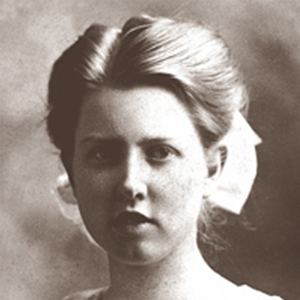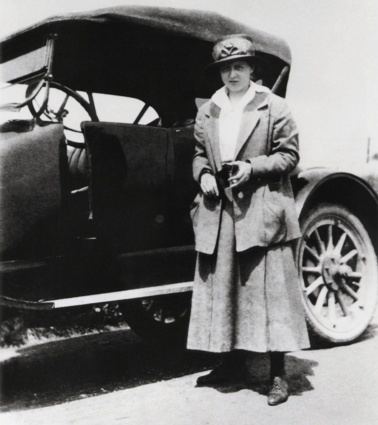Name Anna Keichline | Role Inventor | |
 | ||
Education Pennsylvania State University | ||
Contents

Anna Wagner Keichline (1889–1943) was an American architect, inventor, suffragist, and World War I Special Agent from Pennsylvania. She was the first registered female architect in Pennsylvania and she was "the first woman to actually practice architecture professionally".

Early life
Keichline was the youngest of four children, born in Bellefonte, Pennsylvania to attorney John Keichline. Her parents gave her a workshop and carpentry tools, which she used to create furniture. She won a prize for a table and chest she made at a county fair in 1903, when she was 14, and her work was praised as comparing "favorably with the work of a skilled mechanic". She told a newspaper reporter that she expected to devote her life to industrial design. She graduated from Bellefonte High School in 1906. She studied mechanical engineering for a year at Pennsylvania State College, the only woman in her class, and moved to Cornell University, graduating in 1911, their fifth female to receive an architecture degree. She played basketball at Cornell, served as class officer, and was a sorority and drama club member. Keichline was definitely aware of the disadvantage and difficulty being a woman in architecture– a male dominant field– but she was not discouraged. She was convinced that women could be just as successful because of their innate understanding of space in a home.
Inventions
She became noted for working on "time- and motion-saving" design of kitchens and interiors. She owned seven patents. She had several inventions concerning home use, but her most noted invention was the "K Brick" in 1927. This type of hollow clay brick was less heavy and expensive than previous iterations and was an early form of the concrete block used in construction decades later. This led to her receiving honors from the American Ceramic Society in 1931.
Her first patent combined a sink and a washtub. She wanted to save space in kitchens and make them more comfortable to use. In 1924 she received a patent on one of her kitchen designs. The design was focused on "comfort and convenience, efficiency, and conservation of space." This kitchen featured sloped countertops and cabinets with glass doors. In 1929 she received a patent on an apartment bed design. It could be flipped into the wall to save space.
Her most famous invention was the K Brick, which lead to the development of the concrete block. It was patented in 1927 and she was honored for it by the American Ceramic Society in 1931. The K Brick was made of clay and used for hollow wall construction. It can be described as an inexpensive, light, fireproof clay brick that could be filled with insulating or sound-proofing material. Keichline noted that her K Brick, “requires less to make than brick and because of its design takes less time to fire – the tile would reduce the weight of the wall by one-half.”
Patents
Architecture
Throughout her professional career, she designed seven patents that had great impact on day-to-day life. She also designed houses in Pennsylvania, Ohio, and Washington, D.C. Although the homes she designed have been torn down or renovated, she has left a lasting legacy. She was honored in 2002 with in an official state of Pennsylvania historical marker placed in front of the Plaza Theater, which she designed in 1925. Also, her great niece, Nancy Perkins carried on her legacy by establishing her own industrial design firm, Perkins Design Ltd. Keichline's designs can still be seen in Bellefonte. She designed the Plaza Theatre, the Cadillac Garage and Apartments, the Harvey Apartments, as well as multiple residences.
Personal life
Keichline had her own automobile, which was unusual for women at the time. She was also involved in World War I efforts, serving as a "special agent with military intelligence." She got involved with politics, helping with President Hoover's Better Housing Conference and leading a march in Bellefonte of Suffragists during nationally organized protests on July 4, 1913.
World War I Involvements
During World War I, Keichline served as a Special Agent in the Military Intelligence Division in Washington D.C. When talking about her qualifications for this duty she described herself as,
...twenty-eight and physically somewhat stronger than the average. Might add that I can operate and take care of a car [she owned her own automobile]. The above might suggest a drafting or office job, but if you should deem it advisable to give me something more difficult or as I wish to say more dangerous, I should much prefer it. You have asked for my salary in order to rate me. ...last year my fees amounted to something over six thousand.
Today her fees amounted to over $92,000 and she received letters from her superiors for the quality of her service.
